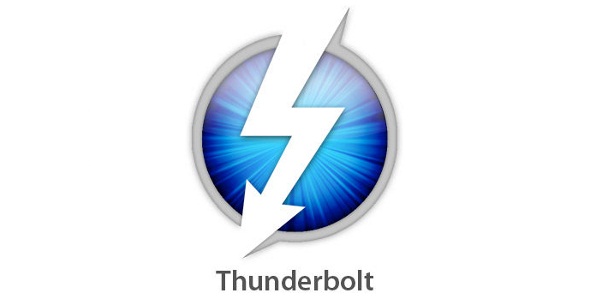
To keep up with the trend generated by the announcement of the new USB 3.1 connectors, Intel is coming with the Thunderbolt 3, which also promises a smaller connector and double the speed of the previous versions. But the release of this new technology will have to wait a while, most probably until 2015 at best, since it’s tied to the Intel’s Skylake chips.
The news of the Thunderbolt 3 was released by the Chinese website, VR-Zone, which provided a slide with details about the Intel’s next generation connector technology named Alpine Ridge. So, from the next-gen Thunderbolt, we can expect an increase in bandwidth, from 20 Gbps to 40 Gbps, according to The Tech Report, a single cable can drive two 4k displays and it can support PCIe Gen3, USB 3.0, DiplayPort 1.2 and HDMI 2.0.
Also, regarding the power, we can notice that the new technology will support devices of up to 100W, a rating that will match the latest USB power deliver specifications.
Thunderbolt 3
The plug of the Thunderbolt 3 will be apparently decreased in size, from the current 4.5 mm to just 3 mm, a size that will better fit ultra-slim mobile devices, like smartphones or tablets. In addition, there will also be available some adapters, which will ensure backward compatibility for older equipment.
Today, Thunderbolt is familiar mainly to MacBook users, as it can be used as a display port connector, but also HP, Lenovo and Asus are using it on their devices selectively.
Since Broadwell CPUs are expected late this year and Alpine Ridge is showed connected in the architecture of the Skylake, which in return, has no release date, it may be quite a while until the Thunderbolt 3 will be available on the market. But this is not really an issue, as PC users don’t find this connector technology too popular and it is certainly not as universal as the USB.
We have to remember that the changes in the connector technology are quite glacial. The best example is the USB 3.0. After almost 10 years, the computer industry is starting to migrate from USB 2.0 to USB 3.0 and it’s still not implemented on the majority of the devices. And this is simply because it’s not yet absolutely necessary.
If users will embrace the new Thunderbolt and if it will come with more compelling devices like external graphic modules, we’ll just have to wait and see.
